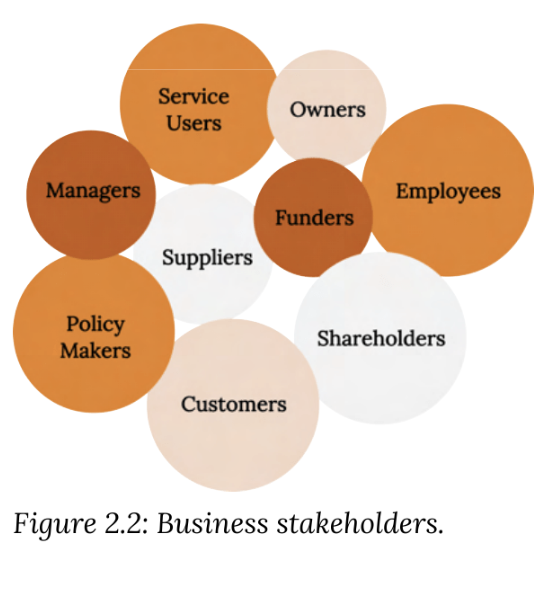MGMT 1 Chapter 2 Reading
1/19
There's no tags or description
Looks like no tags are added yet.
Name | Mastery | Learn | Test | Matching | Spaced |
|---|
No study sessions yet.
20 Terms
entrepreneurs
people who take the risks and reap the rewards associated with starting a new business enterprise.
business
any activity that provides goods and services to consumers for the purpose of making a profit.
revenue
the funds an enterprise receives in exchange for its goods and services.
profit
what is left after paying the bill.
owner(s)
role of investing money in the business.
employees
people who work for the company and help reach its goals.
customers
people who give the business money for goods and services provided.
stakeholders
those with a legitimate interest in the success or failure of the business and policies it adopts. (their interests sometimes conflict with each other)

functional areas
activities needed to operate a business. eg, management, operations, marketing, etc.
management
involves planning for, organizing, leading, and controlling a company’s resources so that it can achieve its goals.
operations manager
the person who designs and oversees the transformation of resources into goods and services.
tangible products
intangible products
marketing
a company does to identify customers’ needs and design products to meet those needs.
accountants
measure, summarize, and communicate financial and managerial information and advise other managers on financial matters.
financial accountants
prepare financial statements to help user, both inside and outside the organization.
managerial accountants
prepare information (eg, cost of materials used in production process) for internal use only.
finance
planning for, obtaining, and managing a company’s funds. eg, how much money does the company need?
macro-environment
big picture world external to a company over which the business exerts very little if any control.
PESTEL model
tool for analyzing external factors that influences businesses. [Political, Economic, Sociocultural, Technological, Environmental, Legal]
![<p>tool for analyzing external factors that influences businesses. [Political, Economic, Sociocultural, Technological, Environmental, Legal]</p>](https://knowt-user-attachments.s3.amazonaws.com/d1a0cdb7-28cd-4ccd-98d7-4b6d82ef72ba.png)